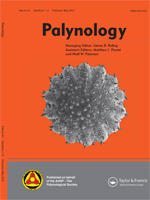Pollen analysis from Paisley Cave 2 (35LK3400), in Oregon has produced a record of climate change affecting the Summer Lake Sub-basin during a 7000-year period beginning at roughly 14,500 cal. yr. These sediments provide an opportunity to examine questions concerning human—environmental interaction at the end of the Pleistocene Epoch, during the Younger Dryas climatic event. The sediment deposits show a relatively unchanging early Holocene environment of predominantly xeric conditions with subalpine and marsh communities nearby. Additionally, there is little evidence of culturally significant use of any specific plant species. The data shows that the overall climatic conditions in the region were slightly cooler and perhaps wetter, just prior to the end of the Late Glacial, than today. These results provide important perspective on early settlement patterns and human ecology in the far western region of North America.
How to translate text using browser tools
1 April 2018
Analysis of Younger Dryas—Early Holocene Pollen in Sediments of Paisley Cave 2, South-Central Oregon
Chase W. Beck,
Vaughn M. Bryant,
Dennis L. Jenkins
ACCESS THE FULL ARTICLE
It is not available for individual sale.
This article is only available to subscribers.
It is not available for individual sale.
It is not available for individual sale.

Palynology
Vol. 42 • No. 2
May 2018
Vol. 42 • No. 2
May 2018
archaeology
Great Basin
PAISLEY CAVES
paleoenvironment
Pollen analysis
wood rat





